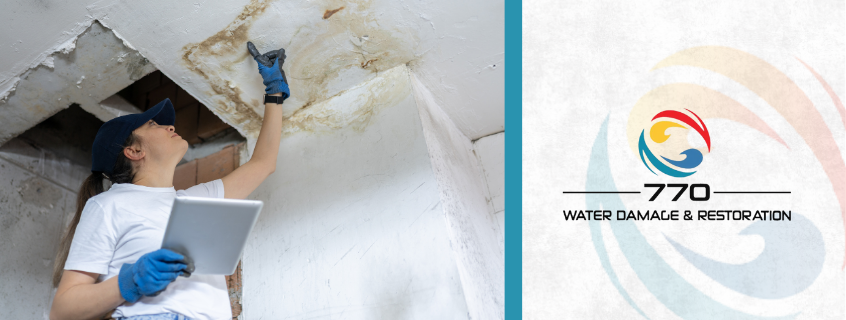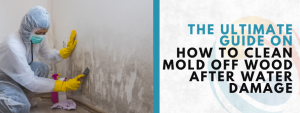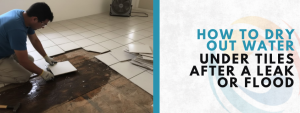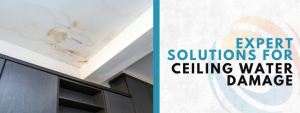
Imagine opening a closet and getting hit by a strange smell or stumbling into a cluttered garage where boxes are ready to tumble. These aren’t just small inconveniences—they’re warnings. The way we store our stuff at home affects far more than appearances. Improper storage risks are real, and they can seriously harm your home and even your health. From growing mold behind furniture to hidden fire hazards, poor storage practices sneak in quietly but strike hard.
Most people don’t think twice before piling items in the attic or stuffing cleaners under the sink. But these simple decisions can lead to long-term problems. Not only do they invite insects, pests, and mildew, but they also weaken the structure of your home and pose respiratory threats. This article unpacks the 7 most common improper storage risks and shows how to avoid them—before it’s too late.
Hidden Mold From Blocked Ventilation
When furniture is pressed tightly against the walls, especially exterior ones, the airflow becomes restricted. That warm, damp environment is perfect for mold to grow quietly behind cabinets, bookshelves, or bed frames.
Now picture this: a family notices an odd odor in their bedroom but assumes it’s just old wood. Months later, after pulling away a headboard, they discover a black, speckled mess of mold.
This mold isn’t just gross. It spreads fast, eats away at paint, drywall, and wood, and sends spores into the air. Those spores cause allergies, coughing, sneezing, or worse for anyone in the house—especially kids or elderly folks.
Improper storage risks like these get worse in humid areas or during rainy seasons. When there’s no space for air to circulate behind large items, moisture sticks around and mold thrives.
Signs that mold might be hiding:
- Persistent musty smell
- Peeling paint near the floorboards
- Dark spots are forming near stored items
- Allergy symptoms worsening indoors
Simple steps to fix this:
- Leave at least 2 inches between walls and large furniture
- Use a dehumidifier in damp rooms
- Check behind items every few months
Mold cleanup isn’t just a scrub-and-go task. It often needs professional care. If you’re already facing water damage or suspect mold, it’s wise to get help from a trusted team that handles moisture damage and indoor restoration before the damage spreads deeper.
Overloaded Storage Units Creating Structural Strain
Ever stacked boxes in the attic without checking the weight limit? Or crammed storage bins on one shelf till it bowed in the middle? Many don’t realize that ceilings, closets, and even floors have limits. Too much pressure in one spot can create long-term structural damage.
Let’s say you live in an older home with wooden beams in the attic. You store boxes of books and out-of-season clothes up there. Slowly, over the months and years, the beams sag and eventually crack. Now your ceiling below begins to buckle. That’s a serious repair job.
Improper storage risks include not only broken shelves and cracks but also injuries. An unstable shelf collapsing onto someone or a ceiling tile giving out is more than a home issue—it’s a safety risk.
Key areas at risk of being overloaded:
| Storage Area | Common Mistake | Potential Damage |
| Attic | Heavy boxes over joists | Ceiling bowing, beam cracks |
| Garage overhead racks | Too many bins above cars | Falling hazards |
| Closet shelves | Books and appliances are stacked | Bracket loosening or tearing |
Here’s what helps:
- Keep heavier items on lower levels
- Rotate stored items every few months
- Check for bending or creaking signs early
Your home isn’t designed to carry endless weight in every corner. Spread out your items, and your structure will thank you.
Chemical Fumes From Household Product Clustering
Some things just don’t belong together. Mixing certain cleaners—even in closed containers—can release dangerous fumes. Bleach and ammonia, for example, can create toxic chloramine gas if their vapors mix. Keeping them in the same cabinet might seem harmless until temperatures rise or the containers leak.
Most households store products under the kitchen or bathroom sink. But tight, dark spaces like that trap fumes. When you open the cabinet, you get a whiff of something strong. That whiff? It might already be harming your lungs.
Children and pets are at greater risk here. Crawling toddlers or curious cats can knock things over. Leaks go unnoticed in crowded cabinets, leading to dangerous puddles or smells.
Improper storage risks connected with chemical products include:
- Breathing issues
- Headaches and dizziness
- Corrosion of pipes or flooring
- Fire hazards when stored near heat sources
How to stay safe:
- Store chemicals in clearly labeled containers
- Separate bleach-based and ammonia-based cleaners
- Keep cleaning supplies in cool, well-ventilated spaces
And always read product labels. If you’re unsure, go digital and search safety data sheets before combining anything in one space.
Cluttered Entryways Blocking Emergency Exits
It’s late at night, and a fire alarm blares. You jump up, try to head toward the door, and suddenly trip over stored boxes or shoes by the entryway. It’s a terrifying scenario, but it’s more common than people think.
Storing too many items near exits like front doors, staircases, or hallway paths can slow down evacuation during emergencies. Fires, floods, or even intrusions become more dangerous when the way out is blocked.
This falls directly under improper storage risks that not only damage your home but could cost lives. Cluttered exits also make it harder for emergency responders to enter your home quickly.
Common entryway storage mistakes:
- Piling deliveries or packages by the front door
- Shoe racks that block half the walkway
- Storage bins at the base of the stairs
- Hanging coats or bags on knobs or handles
Safety suggestions:
- Keep at least a 3-foot-wide path clear at all exits
- Move seasonal items to closets, not hallways
- Install floating shelves to reduce floor clutter
Keeping a clear path isn’t just about convenience—it could save lives. If an emergency does strike and you can’t get out quickly, minor storage mistakes become major regrets.
Pests Attracted to Paper and Fabric Hoards
Old newspapers, cardboard boxes, and bags of clothes may not seem like pest magnets, but they’re the perfect playground for insects and rodents. In damp or dark areas, they’re especially attractive.
Silverfish love eating paper. Mice chew through fabric for nesting. Cockroaches seek out warm paper piles to hide in. If you’ve got a cluttered attic, garage, or under-the-bed storage filled with these items, you’re basically inviting them in.
Improper storage risks like this don’t just lead to bugs. Droppings and shedding from pests cause respiratory issues and spread bacteria.
Watch out for:
- Shredded paper in corners
- Strange smells in fabric storage
- Rustling noises at night
- Small holes in clothing or boxes
Better ways to store items safely:
- Use plastic, airtight containers instead of cardboard
- Store clothing with cedar blocks to deter moths
- Add traps or pest deterrents in risk areas
When you do spot signs of infestation, act fast. Removing the clutter is step one, but if damage is already done, consider professional restoration. You can get connected with experts who handle pest-related cleanup to restore your space safely.
Fire Hazards from Stacked Electronics or Batteries
It may feel convenient to toss old phones, cables, and battery packs into one drawer or bin, but storing electronics this way can cause more harm than you expect. Lithium-ion batteries, in particular, are known to overheat, swell, or even explode under certain conditions.
Stacking electronics on top of each other increases heat buildup. Combine that with faulty cables or metal objects like coins or keys, and you’ve got a mini fire hazard.
Improper storage risks tied to electronics are rising in today’s gadget-filled homes. Every unused tablet, phone, or smartwatch has the potential to spark trouble when not stored properly.
Fire dangers from poor electronics storage:
- Short-circuiting from exposed wires
- Battery overheating in enclosed spaces
- Fire spread from plthe astic casings, catching flame
To store electronics safely:
- Remove batteries from devices you won’t use for a while
- Store gadgets in cool, dry, non-cluttered spaces
- Keep cords coiled neatly and away from heat sources
- Never store batteries in metal containers
If a fire does happen, even a small one, the smoke and soot can linger. You’ll need a proper cleanup team, and that’s when having a go-to restoration resource becomes essential for getting your home back to normal.
Wood Panel Walls Warping from Poor Storage Planning
Wood panel walls are beautiful, timeless, and warm—but only if they’re cared for properly. If you store items directly against them or expose them to moisture from leaky containers, you might begin to notice warping, discoloration, or cracks. That’s a costly repair.
When heavy furniture or bins are pushed right up to wooden walls, they trap heat and moisture. Add poor ventilation, and the panels start to absorb that trapped moisture, bending or buckling in time.
Here’s where improper storage risks quietly affect your home’s value and design. Wood paneling requires breathing space, just like floors and beams.
What leads to wall panel damage:
- Leaning wet mops or umbrellas against panel walls
- Placing plastic bins directly on wood surfaces
- Using double-sided tape that peels the finish off
Best practices to protect wood panels:
- Maintain a few inches of breathing room between storage and walls
- Use padded hooks or racks instead of direct adhesive
- Clean spills immediately, especially near wooden surfaces
If you’re planning to upgrade or install wall paneling, always factor in storage planning. Choosing durable materials and proper sealants can also help your walls withstand daily use.
Final Thoughts
The way we store things in our homes might seem harmless, but it has real consequences. From mold growth and fire hazards to warped wood panels and pest invasions, improper storage risks sneak in through daily habits. The good news is, they’re easy to avoid once you know where to look and how to act.
Start by:
- Walking through your home and identifying clutter zones
- Checking stored items for leaks, heat, or stacking issues
- Making space for air to flow behind large items
- Creating labels, bins, and rotation routines for better organization
And remember, if you suspect serious damage—especially involving water, pests, or fire aftermath—don’t wait. Get in touch with professionals who can help bring your space back to health. Small improvements today can prevent big disasters tomorrow.
Frequently Asked Questions (FAQs): Protecting Your Home from Improper Storage Risks
How do I know if my home has improper storage risks?
If you notice strange odors, pest activity, warped walls, or blocked pathways, these are warning signs. Regularly inspecting storage areas and keeping airflow clear can help identify problems early.
Can improper storage actually affect my health?
Yes, it can lead to mold growth, chemical fume exposure, and pest contamination. These risks may trigger allergies, respiratory issues, or even toxic reactions.
What should I avoid storing near wood panel walls?
Avoid placing wet items, heavy bins, or anything that traps moisture directly against the panels. Keep a small gap for airflow and wipe spills immediately to prevent warping.
Is it okay to stack electronics and old batteries together?
No, storing them together can cause overheating or fire hazards. Always separate electronics, remove batteries, and keep them in cool, dry locations.
What’s the safest way to store household cleaning products?
Keep them in a well-ventilated area and never mix ammonia-based and bleach-based products. Use labeled containers and avoid crowding under-sink cabinets.






